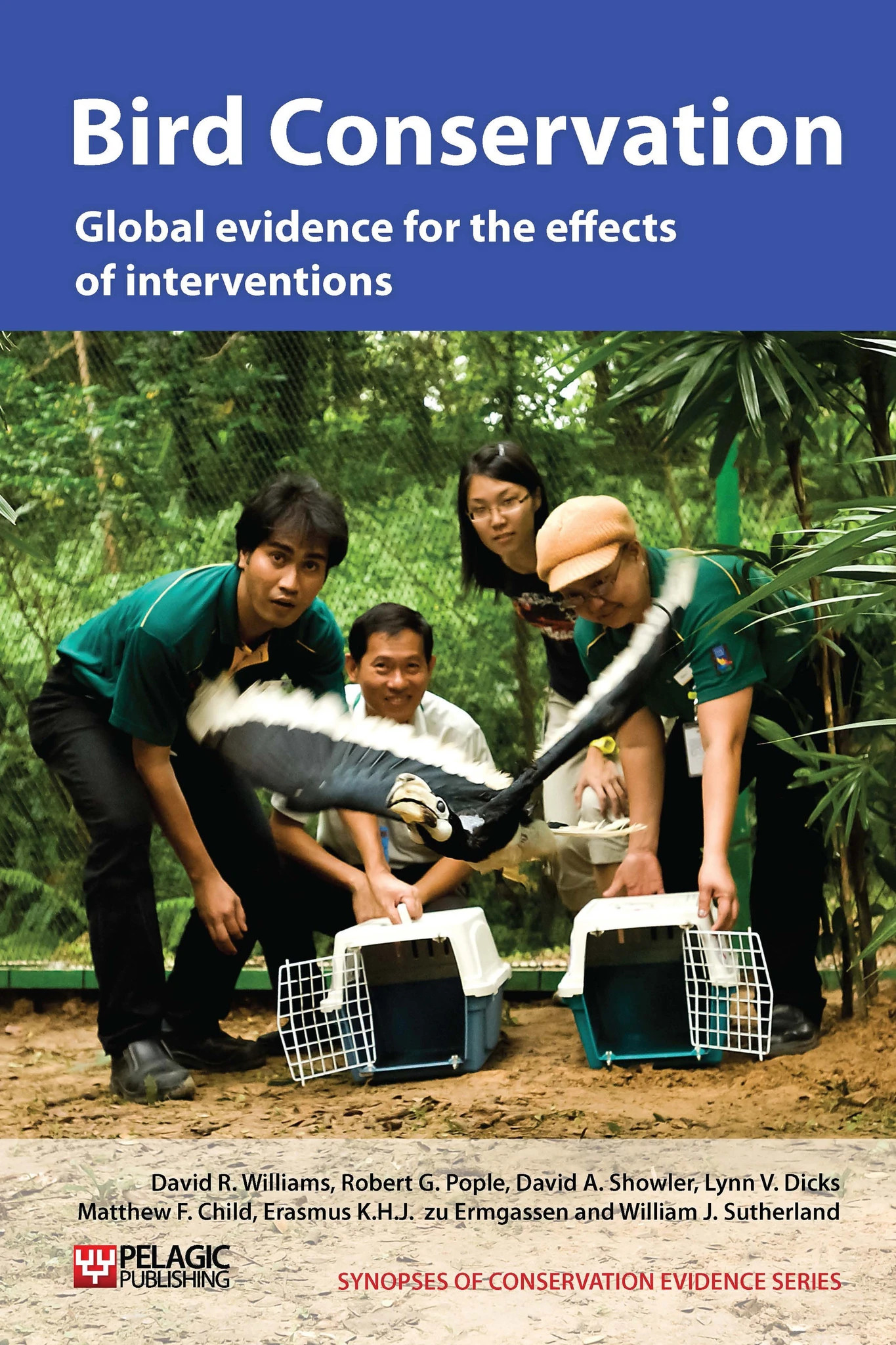Use artificial insemination in captive breeding
-
Overall effectiveness category Unknown effectiveness (limited evidence)
-
Number of studies: 5
View assessment score
Hide assessment score
How is the evidence assessed?
-
Effectiveness
33% -
Certainty
21% -
Harms
0%
Study locations
Supporting evidence from individual studies
A replicated ex situ study in the USA in 1973-5 (Boyd et al. 1977) found that five prairie falcons Falco mexicanus that were artificially inseminated laid a total of 37 eggs (although none in 1973), of which 19 were fertile and 15 hatched. Twelve chicks eventually fledged. Sperm was taken from a single male and either used immediately or refrigerated and used within ten hours.
Study and other actions testedA small study in a breeding centre in Maryland, USA, in 1980 (Wiemeyer 1981) found that an artificially inseminated, wild-bred, female bald eagle Haliaeetus leucocephalus laid two eggs, but both were infertile. The sperm was taken from one wild-bred male and one captive-bred male and mixed and the female was inseminated within an hour. The authors suggested that repeated inseminations would have been preferable, but that the disturbance caused by capturing and inseminating the female risked disturbing other breeding birds nearby. This study is also discussed in ‘Use captive breeding to increase or maintain populations’, ‘Release captive-bred individuals’ and ‘Foster birds with wild conspecifics’.
Study and other actions testedA review of a houbara bustard Chlamydotis undulata macqueenii captive breeding programme in Saudi Arabia (Seddon et al. 1995) found that artificial insemination increased fertility rates from 50% to 85% between 1989 and 1993. At least 440 chicks were hatched during the study period. This study is also discussed in ‘Use captive breeding to increase or maintain populations’, Artificially incubate and hand-rear birds in captivity’ and ‘Release captive-bred individuals’.
Study and other actions testedAnother review (Jaime et al. 1996) of the same houbara bustard Chlamydotis undulata macqueenii programme as Seddon et al. 1995 found that artificial insemination achieved the highest rates of fertility with inseminations of more than 10 million spermatozoa every 4-5 days. This study is also discussed in ‘Use captive breeding to increase or maintain populations’, ‘Release captive-bred individuals’, ‘Use holding pens at site of release’, ‘Release birds in ‘coveys’ and ‘Use holding pens at site of release and clip birds’ wings’.
Study and other actions testedA review in 2009 (Blanco et al. 2009) of the challenges of artificial insemination argued that it has the potential to be an important component of bird conservation and population restoration. Extracting good quality sperm is a major barrier, with the ‘abdominal massage technique’ being the most practical and widely applicable method (although it is prone to urine contamination). Trained birds are more likely to accept insemination. The authors found that fertility is up to 400% higher when sperm are deposited into the vagina compared to the cloaca. However, this constraint can be overcome by boosting sperm volume and insemination frequency (2-3 times/week), which has resulted in 80% fertility in crane species using cloacal insemination. Multiple, deep inseminations improves fertility and can help to overcome poor semen quality. Even when eggs are mostly fertile, artificial insemination can increase fertility by an additional 5-10%.
Study and other actions tested
Where has this evidence come from?
List of journals searched by synopsis
All the journals searched for all synopses
This Action forms part of the Action Synopsis:
Bird Conservation
Bird Conservation - Published 2013
Bird Synopsis





)_2023.JPG)














